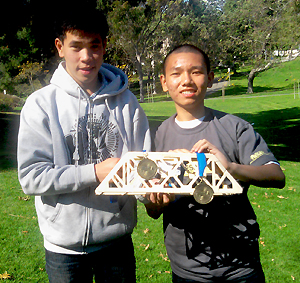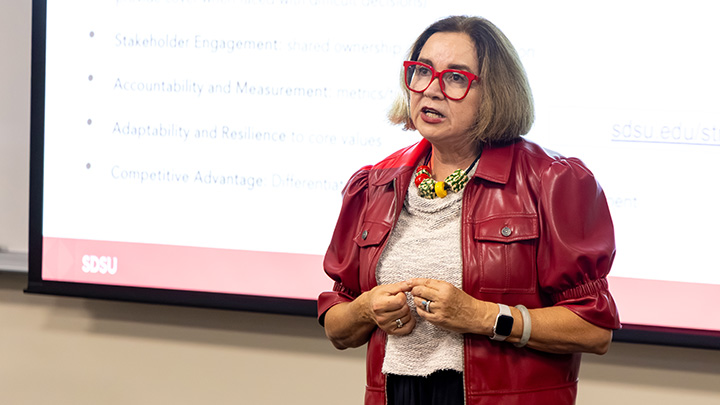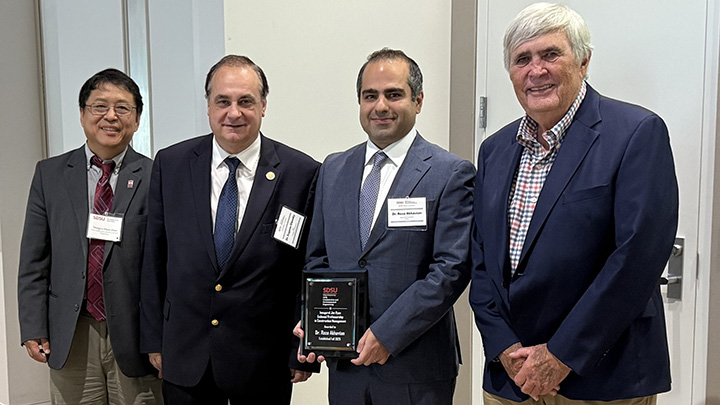Hoover High Students Go for Gold
More than two dozen students competed locally, with 10 qualifying for a regional science competition.

When Hoover High School senior Vunzener Jones-Furr joined MESA (Mathematics Engineering Science Achievement), she was looking for an after-school activity that tapped into her interests and was something other than sports.
“I found out about MESA from one of my teachers and I wanted to participate because I am very interested in science,” Jones-Furr said.
Little did she realize her after-school hobby was going to turn into something of an obsession.
“At first we would meet only on Thursday, but then students began coming to my classroom after school every day of the week to work on their projects,” said Jeffery Mellinger, who oversees the MESA program at Hoover High School, one of three public schools that is part of San Diego State University’s City Heights Educational Collaborative.
An after-school obsession
Students spend hours working on projects like building a prosthetic arm that can pick up and pour sand into a cylinder, or design a pressure-withstanding bridge built entirely out of manila envelopes.
Students from SDSU’s MESA engineering program help out as well, serving as tutors and assisting high school students with project development. The program aims to continue the high school efforts by helping budding scientists and engineers succeed at the college level as well.
Jones-Furr is one of 32 Hoover High students whose projects were entered into the annual San Diego County MESA competition and one of the 10 to qualify for last month's Southern California regional competition in Anaheim. Hoover High School had one of the largest contingencies, participating against high schools throughout San Diego, Orange and Los Angeles counties.
Gold medal project
Sophomore Thong Dinh also qualified for the regional competition and came home with a gold medal for his and classmate Tri Tran’s manila folder bridge project.
“The most challenging part was that it took my partner, Tri, and I about 20 hours to finish it,” Dinh said. “We had to be very exact in our measurements and in folding the bridge.”
The purpose of MESA is to engage low-income, disadvantaged students in math and science.
“I think I would like to be a scientist or engineer and this project helped me to see that it might be a possibility,” Dinh said.
MESA is one of only a few after-school programs centered around science.
“The program really took off this year,” Mellinger said. “Last year, we had six students and the year before only one participated.”
Building a bridge
The more than two dozen students participating in the weekly after-school club range from those with a 4.0 GPA to students in the special education program.
“We start off with a basic hobby-like approach and then get into the deeper science,” Mellinger explained. “Some already had the interest in science, but for many others the experience has enhanced their interests in pursuing science.
“The competition gave them something to focus on, but it really is more about the experience than it is about the awards they could receive as a result.”



